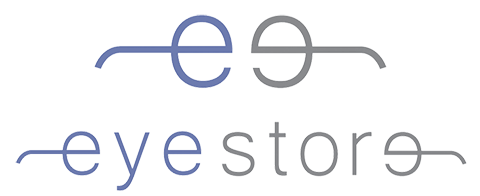Contact Lenses for the Hard to Fit Patient
It is not uncommon for patients to have difficulty wearing contact lenses for a number of reasons. Due to an irregular eye shape, certain eye conditions, high optical prescription or the aftermath of eye surgery, some patients may be considered to be ‘hard to fit’ contact lens wearers.

For ‘hard to fit’ patients that prefer to wear contact lenses however, there are options available that can provide clear and comfortable contact lens wear. This may require a specialised fitting with an optometrist with the training and experience in your condition and knows the various options available to find the optimum solutions for your specific needs. You may be considered a hard to fit contact lens candidate if you have one of the following conditions:
- Dry Eyes
- Astigmatism
- Giant Papillary Conjunctivitis (GPC)
- Keratoconus
- Pellucid Marginal Degeneration
- Post-LASIK or other refractive surgery
- Presbyopia (reduced near vision common in individuals aged 40 and over).
- Corneal Disease or Scarring
Dry Eyes and Contact Lenses
Dry Eye Syndrome causes your eyes to feel dry, gritty, burning, red and irritated. Dry Eye Syndrome can also cause blurred vision. Often these symptoms can sometimes worsen with the use of contact lenses. In fact, many people who do not normally suffer from chronic dry eyes, will experience some of these symptoms as a result of contact lens wear.
First of all, if you have chronic dry eyes, you should see your optometrist for treatment and relief before you think about contact lenses. Once your dry eyes is being managed, it is safe to try contacts and there are a number of options that can be considered.
Many brands of contact lenses and contact lens care products, such as disinfectant and cleansing solutions, are made with ingredients that are designed to be more comfortable for individuals with dry eyes. Your optometrist will be able to recommend the brands and lens care products that would best suit you. Alternatively, gas permeable (GP) or rigid gas permeable (RGP) lenses are made with a hard material that in some cases does not dry out like soft lenses and they are able to hold a certain amount of moisture beneath the lens to keep the eye from drying out. Gas permeable lenses are a very good option and can be quite comfortable for individuals with dry eyes.
Additionally, your optometrist might recommend a specific wearing schedule such as limiting the time you wear your contacts throughout the day or replacing your contacts on a more frequent basis.
Toric Lenses for Astigmatism
Astigmatism is a condition that causes blurred vision (in some cases double vision) because rather than being spherical, the front of the eye (the cornea) has an elliptical or oval shape, therefore, your eye will have two focal points instead of one. This makes it difficult for traditional contact lenses to provide the best fit and therefore requires specific contact lenses such as toric soft lenses or rigid gas permeable lenses (RGPs).
Toric contact lenses are designed to correct astigmatism, most of these lenses are readily available but can also be custom made to fit the eye of the patient. Most are made of soft material designed to automatically move and rotate into the correct position on the eye, however in some cases, when the rotation of the lens (due to blinking and eye movement) is unable to provide stable vision, gas permeable lenses might provide clearer vision. If your eyes requires custom-made contact lenses, these may be more expensive and may take more time to be manufactured than traditional lenses.
Giant Papillary Conjunctivitis (GPC) and Contact Lenses
GPC is a type of conjunctivitis in which the inner surface of the eyelid becomes irritated and swollen. The condition can be caused or worsened by a buildup of protein deposits on contact lenses. Your optometrist may either recommend daily disposable lenses or RGP lenses (which are not water based) and therefore have less of a tendency for protein buildup. Your optometrist may also prescribe medicated eye drops or ask you to stop the use of contact lenses until the symptoms improve.
Rigid Gas Permeable (RGP) or Gas Permeable (GP) Lenses
Rigid Gas Permeable (RGP) also known as hard or Gas Permeable (GP) lenses are effective for many hard to fit patients. The oxygen permeable material lets the eye breathe and significantly reduces the chance of infection due to protein deposits which tend to harbor bacteria on soft lenses. RGPs also hold moisture under the lens to keep eyes from drying out.
Rigid Gas Permeable (RGP) Lenses for Keratoconus
Keratoconus is a condition in which the cornea thins and bulges forward into a cone shape. Traditional contact lenses may cause some discomfort in these patients and the vision may still be blurry therefore RGPs are often used for treatment for mild, moderate and some severe cases. Rigid gas permeable lenses may help to slow down the cone shape from worsening in some cases. Further, RGPs are able to assist in vision correction for keratoconus which is often not possible with soft contacts or glasses.
Post-LASIK or Vision Correction (Refractive) Surgery
While LASIK surgery has a very high success rate, there are occasionally vision complications and side effects that may remain. Night vision after LASIK, in particular, can sometimes leave you experiencing issues such as glare or halos around lights. Custom fit soft lenses or RGPs are often effective in helping with these side effects and restoring clear vision.
Bifocal and Multifocal Contact Lenses for Presbyopia
Presbyopia is a common condition in those people usually over 40 years old in which the eyes’ ability to read or focus on close objects is reduced. Many people keep a pair of reading glasses, bifocal or multifocal glasses on hand for times when they have to read menus, newspapers, books and other objects that require near vision. For those that prefer contact lenses over glasses, bifocal and multifocal contact lenses can be a very convenient option.
For some patients that have presbyopia and need correction for distance vision as well close vision, one option is known as monovision. Monovision is a contact lens fitting process in which you wear a contact lens in one eye for distance vision and the other contact lens of your other eye for near vision. Another option is multifocal contact lenses. In this option, both eyes are focused for distance vision and near at the same time. Both these contact lens fitting options usually take about one week for the brain and the eyes to adjust.
If you have one of these conditions that make contact lenses hard to fit or you find contact lens wear difficult for any other another reason, speak with your optometrist. As technology improves there are always new options for ‘hard to fit’ contact lens patients to benefit from the comfort and convenience of contact lenses.
Read about Ortho-K to see if you may be a good candidate for these gentle overnight cornea re-shaping contact lenses.
